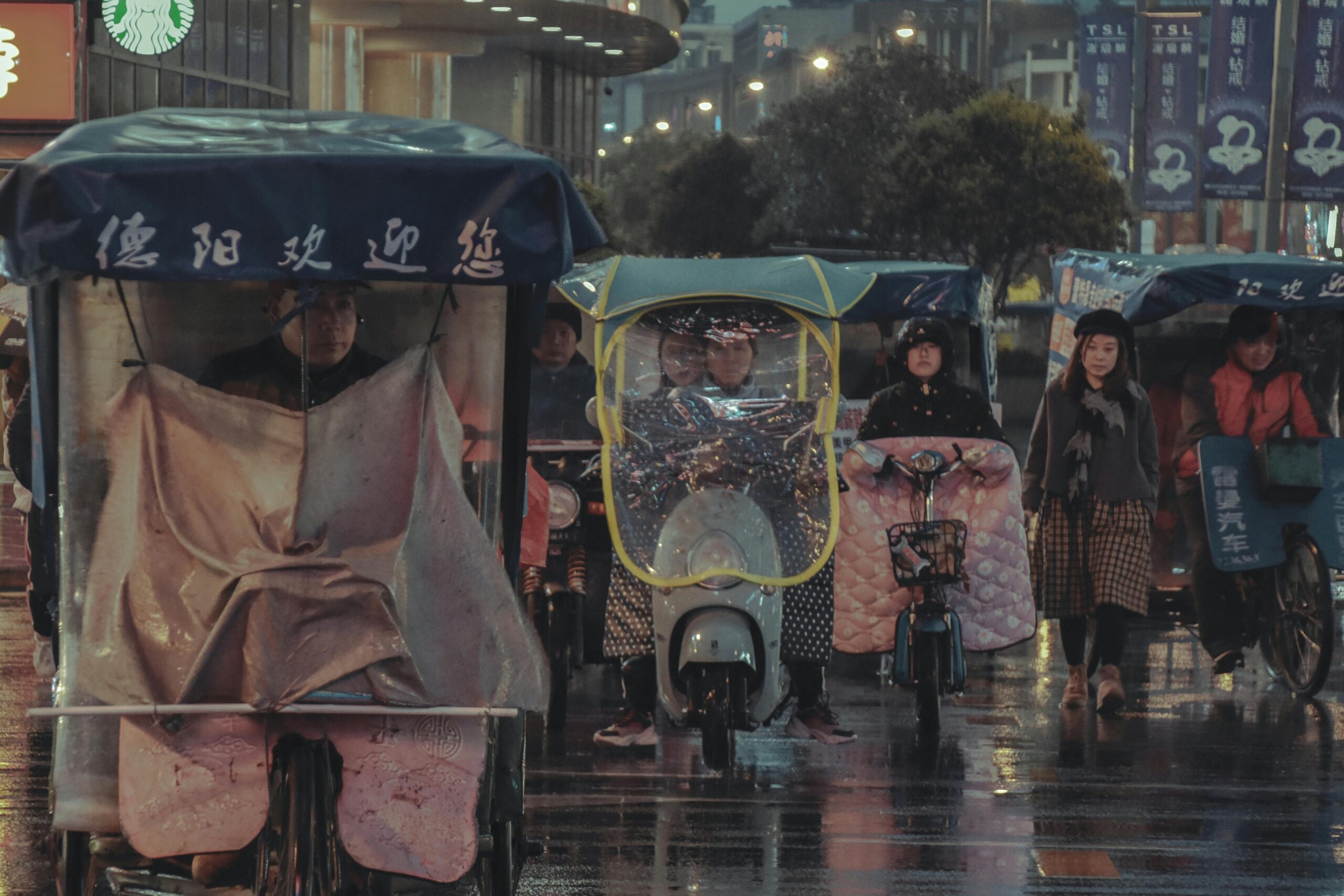Have you ever faced a sudden downpour wishing your motorcycle rain gear for beginners was ready for the challenge?
Many new riders know this exact feeling—soaked gloves, foggy visors, and water trickling down your back as you push through a storm. It’s not just unpleasant; it can be dangerous. In fact, according to the National Highway Traffic Safety Administration, wet weather conditions contribute to nearly 20% of all motorcycle accidents involving poor visibility or loss of traction. Without the right motorcycle rain gear, you’re not only uncomfortable—you’re at risk.
But here’s the good news: with just a few essential pieces of quality gear and some smart prep, you can stay dry, safe, and confident on the road.
As a matter of fact, I have faced the enemy (also known as bad weather) many times. On our last motorcycle camping trip to Sylvan Lake, AB, my husband and I were caught in a downpour so intense each rain drop felt like a needle stabbing! We learned a lot from this experience, and I will gladly share my life lessons with you.
Therefore, I wrote this article as a clear, beginner-friendly guide to motorcycle rain gear—what you need, what to avoid, and how to make sure your gear lasts.
Let’s get you equipped—rain or shine.
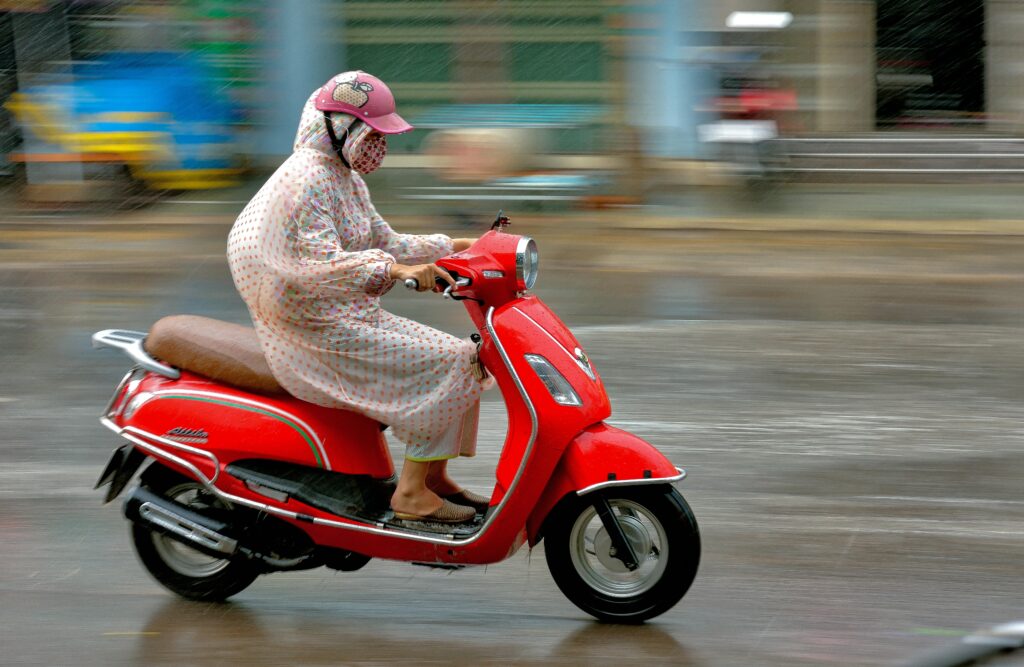

Motorcycle Rain Gear for Beginners: Why It Matters
Choosing the right motorcycle rain gear as a beginner is about more than staying dry — it’s about safety, comfort, and developing good riding habits. Rain affects road traction, visibility, and temperature regulation. Without proper gear, you may readily find yourself distracted, cold, or even unable to brake effectively.
Moreover, beginners in particular often underestimate how rain can change the dynamics of riding. Unlike driving a car, there’s no roof or windshield to shield you. Rain gear is your first line of defence, ensuring you maintain grip, stay visible to others, and feel confident on the road.
As a result, riders who invest early in their rain setup build long-term riding confidence. You’ll also extend the life of your gear and bike components by keeping water, mud, and grime at bay — a win-win for safety and maintenance.
Pro Tip: You never truly know what you were missing until you get it. As a student, I would commute a minimum of 1-2 hours in each direction by train to get to my university and, therefore, suffer all kinds of deluge on the regular. One day, I decided eeeë4s4sto spend a whole week’s pay on a solid raincoat from Rains. Having something sturdy and of the best quality was life changing, and I still own it today, almost 10 years later. (PS. I even wear it over my motorcycling gear!).
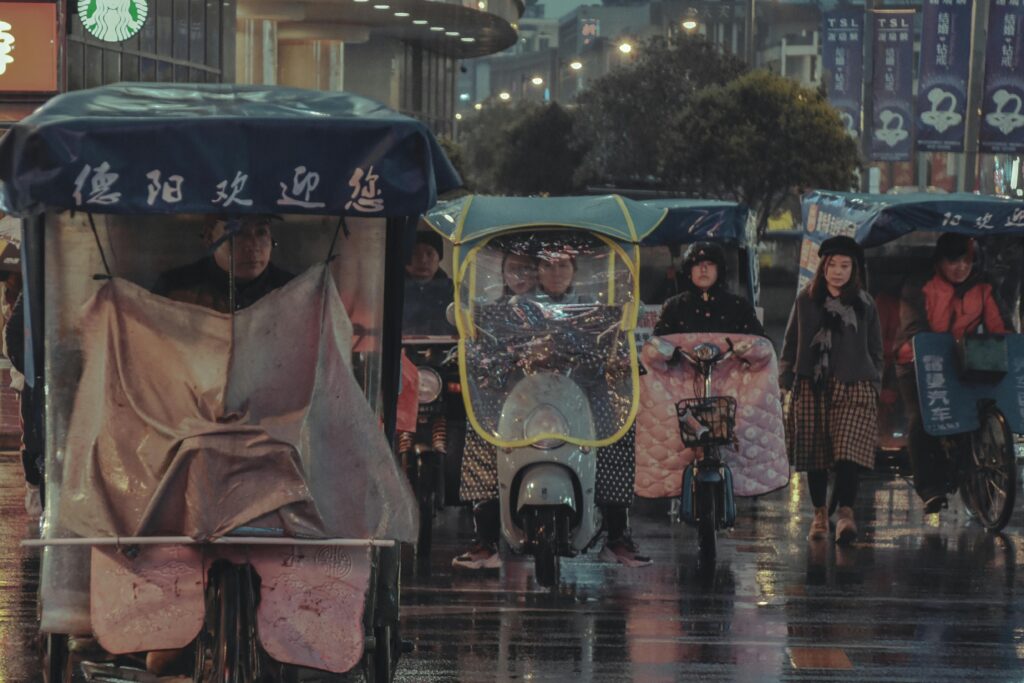
Key Components of Motorcycle Rain Gear
Getting your rain setup right means knowing what each piece does—and how it protects you. The following items of motorcycle gear are a good place to start:
- Rain Jacket: Choose a jacket specifically designed for motorcyclists—not a hiking shell. Look for sealed seams, reflective piping, and a high collar. A good jacket should fit over your regular riding gear.
- Rain Pants or Overpants: These should be easy to slip on over your gear and boots. A full side zipper is ideal for quick changes at the roadside.
- Waterproof Gloves: Your hands control everything—so keeping them dry is crucial. Look for gloves with a rain membrane and visor wiper on the index finger.
- Boot Covers or Waterproof Boots: Your boots are in the splash zone. Waterproof touring boots or boot covers protect against puddles and long soaks.
- Neck and Helmet Protection: A waterproof balaclava or neck gaiter helps seal off the gap between your jacket and helmet. Some riders also add a helmet rain cover or visor treatment for visibility.
Equipping yourself with these essentials ensures you’ll be prepared for rainy rides without compromising comfort or safety.
If you’re still building your gear system, our complete motorcycle gear guide for beginners will help you understand layering, materials, and more.
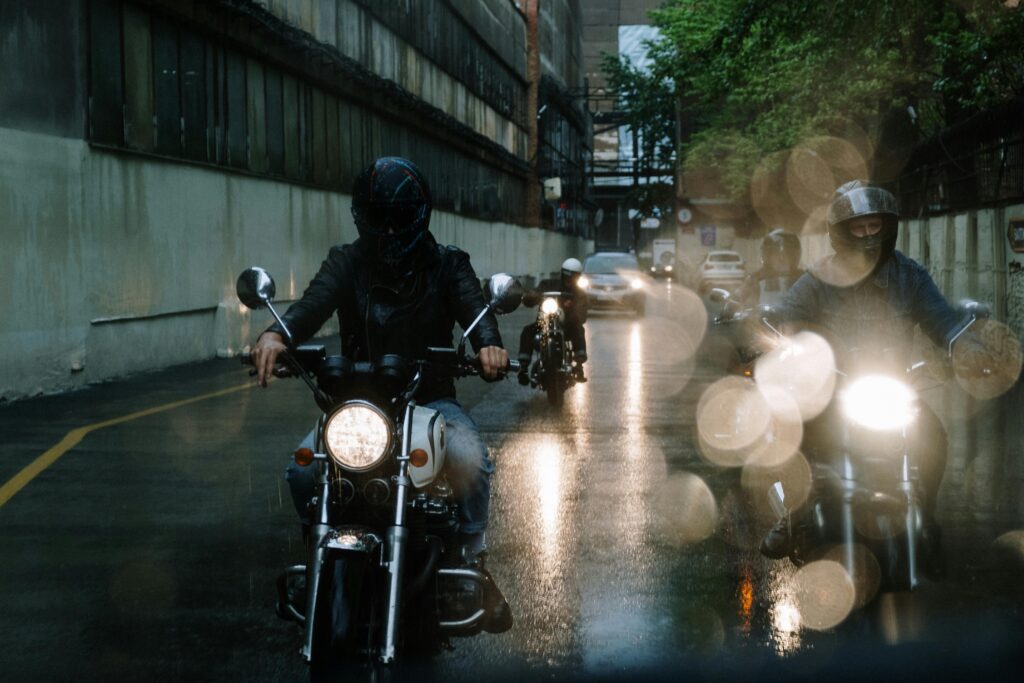
What to Look for in Quality Rain Gear (Buying Guide)
Not all gear is created equal — especially when it comes to surviving a storm on two wheels. When choosing motorcycle rain gear for beginners, here’s what to prioritise:
- Waterproofing Technology: Materials like Gore-Tex and DWR-coated textiles offer breathable waterproofing, while PVC is cheaper but less ventilated.
- Fit and Functionality: Your gear should layer easily over your existing riding gear. Look for adjustable cuffs, zippered leg openings, and reinforced seams.
- Reflectivity and Visibility: Rain often brings low-light conditions. Reflective piping or panels on your gear can make the difference between drivers seeing you or not.
- Packability: Especially for touring or commuting, compact rain gear that folds into its own pouch or a tail bag is invaluable.
- Durability vs. Budget: Generally, mid-range options offer the best balance—providing enough durability for regular use while staying affordable.
By focusing on these elements, you’ll avoid common buying mistakes and get gear that lasts longer, performs better, and keeps you safer.
If you’re planning to ride through the colder months as well, be sure to check out my guide on winter motorcycle gear for tips on staying warm and dry all season long.

Common Mistakes Riders Make with Rain Gear
Even the best gear can fail if it’s not used correctly. These are some of the most common—and avoidable—mistakes new riders make:
- Choosing the Wrong Fit: Rain gear should fit over your normal riding gear—but not flap like a sail. Poor fit leads to water pooling, wind resistance, and distractions.
- Not Sealing Seams or Zippers: A surprising amount of water enters through unsealed zippers. Always check that your gear has storm flaps and taped seams.
- Ignoring Glove and Boot Integration: Tuck gloves under sleeves and pants over boots—or vice versa—depending on the gear’s design. If you get this wrong, rain will stream inside.
- Forgetting About Ventilation: Waterproof doesn’t mean breathable. Without vents, your gear will trap sweat and heat, making you just as miserable as being wet.
- Failing to Pack or Carry It: Many new riders leave rain gear at home. Depending on where you live, the weather can shift quickly, and being unprepared can cut your ride short. A compact rain kit should always be part of your essential carry.
Avoiding these simple missteps will dramatically improve your wet-weather experience—and ensure that rain never ruins a great ride.
For tips on smart storage and packing systems, especially so that you don’t forget your rain gear, have a look at our guide to the best motorcycle luggage for touring.
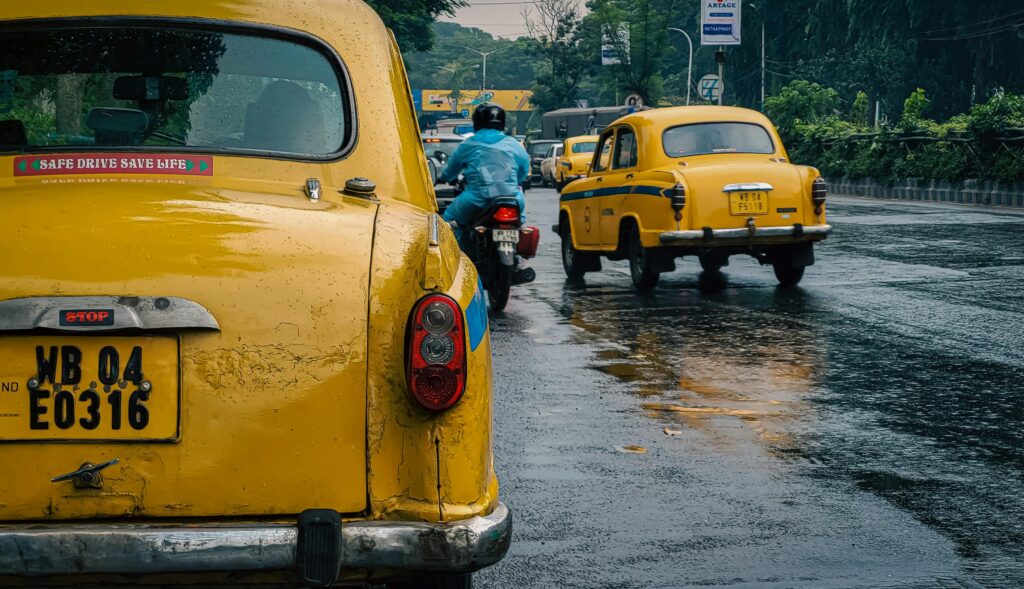
How to Maintain and Store Your Rain Gear
Your rain gear is an investment—and like all motorcycle gear, it needs some care to perform when you need it most.
- Clean It Properly: Use a gentle tech-wash (like Nikwax or Granger’s) designed for waterproof fabrics. Avoid harsh detergents, which can damage membranes.
- Dry It Out Thoroughly: Never pack your gear away wet. Hang it in a ventilated space, and make sure inside layers are fully dry before storing.
- Reapply DWR Coating (Durable Water Repellency): Over time, water may start soaking into the surface fabric. Reapply a spray-on or wash-in DWR to restore water-beading performance.
- Store It Loosely: Avoid stuffing gear into tight spaces for long periods. This breaks down materials and seam taping. Store in a breathable garment bag or large tote.
- Inspect Regularly: Check for seam wear, fraying, or tears. Fix small issues early—don’t wait until a downpour exposes a problem.
Routine care ensures your gear is ready at a moment’s notice—because rain doesn’t RSVP.
Pro Tip: How many woollen jumpers have you shrunk in the dryer because you didn’t follow the cleaning instructions? It took me several failures to learn my lesson. Because motorcycle gear is technical, not easily replaceable and can be quite expensive, make sure to follow all the manufacturers instructions. A mistake could set you back hundreds of dollars!
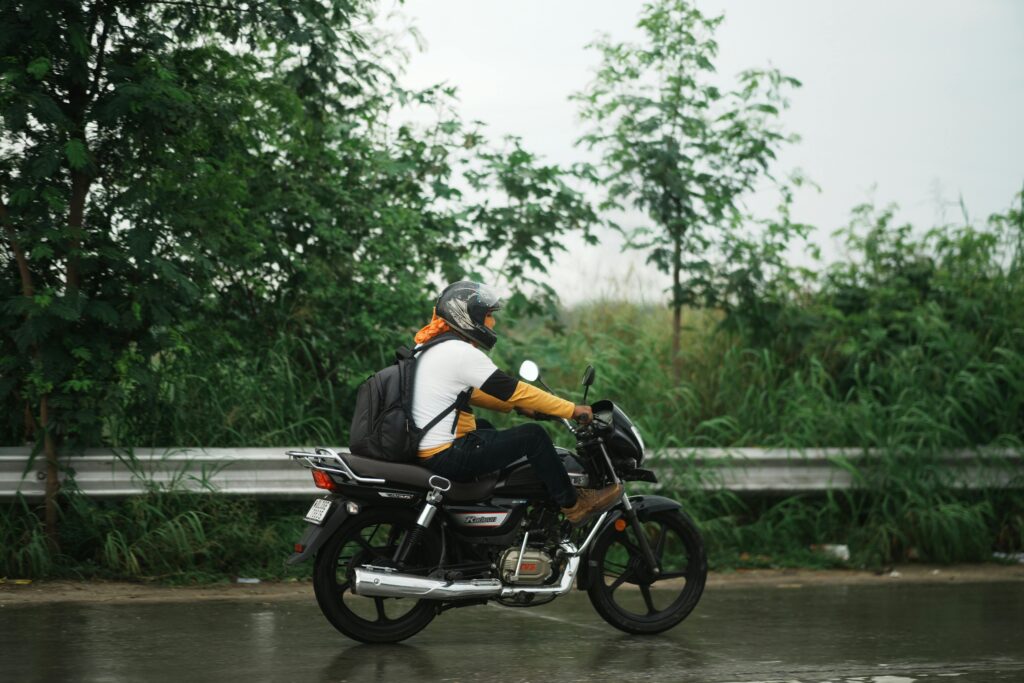
Choosing the Right Rain Gear for You
The right motorcycle rain gear for beginners isn’t one-size-fits-all—it depends on your riding habits, environment, and personal preferences. Here are the key factors to consider when building a setup that truly works for you:
- Commuting vs. Touring: Daily commuters benefit from compact gear that’s easy to store and quick to put on at a moment’s notice. In contrast, touring riders typically need high-performance rain gear with premium waterproofing, all-day comfort, and breathability.
- Integrated vs. Over-Gear Options: Some rain gear is built into your regular motorcycle jacket or pants—ideal for simplicity and reducing bulk. Others are designed to be worn over your standard gear only when needed, offering more flexibility but requiring extra steps when the rain starts.
- Warm vs. Cold Climates: In hot or humid regions, breathable rain gear with well-placed vents is essential to avoid overheating. In colder climates, choose waterproof layers that also offer insulation and protection from wind chill.
- Budget and Value: Entry-level gear can offer solid protection if it fits well and is worn correctly. However, higher-end waterproof gear typically provides better ergonomics, lighter weight, and longer-term durability—worth the investment for regular riders.
Taking these variables into account will help you choose rain gear that enhances your comfort, safety, and riding enjoyment—no matter the forecast.
Don’t forget—you’re not always riding solo. If you carry a passenger, their comfort in the rain matters just as much as yours. Have a look at our guide to being comfortable as a motorcycle passenger.

Tips for Riding in the Rain as a Beginner
Once your gear is sorted, your riding technique becomes the next big factor when considering your safety in the rain. Here are beginner-friendly tips for mastering wet weather riding:
- Prepare Before the Ride: Check tire tread depth, lube your chain, and clean your visor with an anti-fog solution. Pack your rain gear where it’s easy to access.
- Dress in Layers: Rain can drop the temperature significantly. Thermal base layers help keep your body warm and prevent shivering, which affects control.
- Slow Your Inputs: Brake and accelerate smoothly. Avoid abrupt movements, and always increase your following distance.
- Avoid Painted Lines and Puddles: Crosswalk paint, oil slicks, and metal surfaces are extra slippery when wet. Keep your eyes scanning the road surface constantly.
- Dry and Store Your Gear: When you get home, hang everything to dry in a ventilated area. Never store damp gear in a closed bag — mould and odour can build quickly.
Practicing these habits will not only improve your confidence but also help you get more out of your rain gear over time.
Pro Tip: As a very new beginner, I would consider not riding in the rain. Why so strict? Rainy weather is when a lot of accidents happen. My husband has been riding for years and is a very experienced on a motorcycle. But even he sometimes forsakes the bike for the car when it is looking gloomy outside, and not just to avoid getting wet. Get a few hours under your belt first.
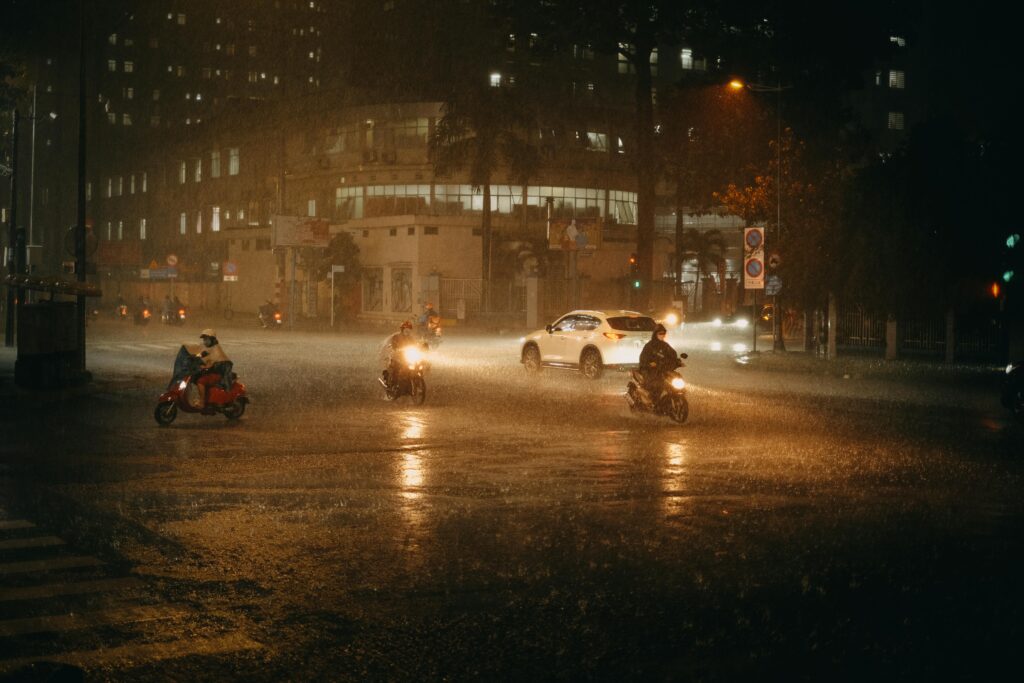
FAQ: Motorcycle Rain Gear for Beginners
Q. Can I use my regular riding gear in the rain?
You can, but most riding jackets and pants are water-resistant at best. Without waterproof layers, you’ll likely end up soaked and cold. Waterproof over-gear is strongly recommended.
Q. How do I know if gear is truly waterproof?
Look for specs like taped seams, waterproof membranes (Gore-Tex, D-Dry, H2Out), and lab-tested ratings. Avoid products labeled only as “water-resistant.”
Q. Is one-piece or two-piece rain gear better for beginners?
Two-piece gear is generally more flexible and easier to layer, especially for beginners. One-piece suits offer better sealing but are harder to put on quickly.
Q. How do I carry rain gear when not in use?
Most beginner sets are packable and fit into a small tail bag, tank bag, or under the seat. Some even come with their own stuff sacks.
Q. How often should I replace my motorcycle rain gear?
Depending on quality and usage, rain gear should last 2–5 years. Signs it’s time to replace include flaking material, leaky seams, or broken zippers.
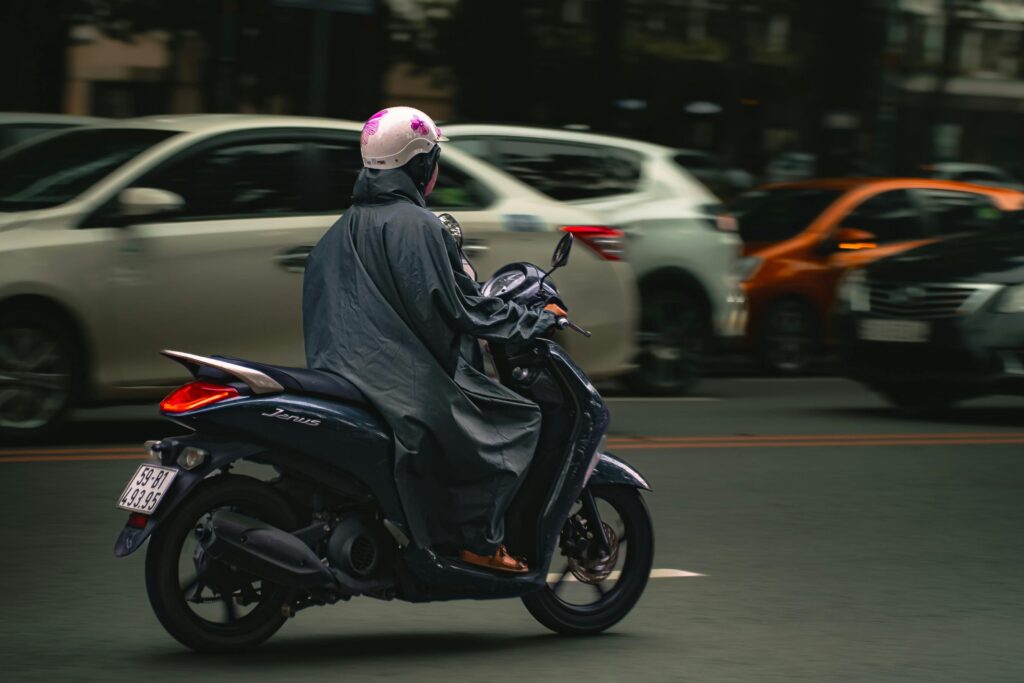
Final Thoughts
Rain doesn’t have to ruin your ride — especially when you’re equipped with the right motorcycle rain gear for beginners. Investing early in reliable rain protection helps you ride longer, safer, and more comfortably, no matter the forecast.
From waterproof jackets and pants to gloves, boots, and smart accessories, every piece of gear plays a role in keeping you confident on the road. As you gain experience, your setup can evolve — but starting with a solid foundation now will make a huge difference.
Want to build the ultimate gear kit for 2025? Check out our related guides on motorcycle gloves for beginners, motorcycle boots, and essential accessories for beginners to complete your all-weather riding arsenal.

